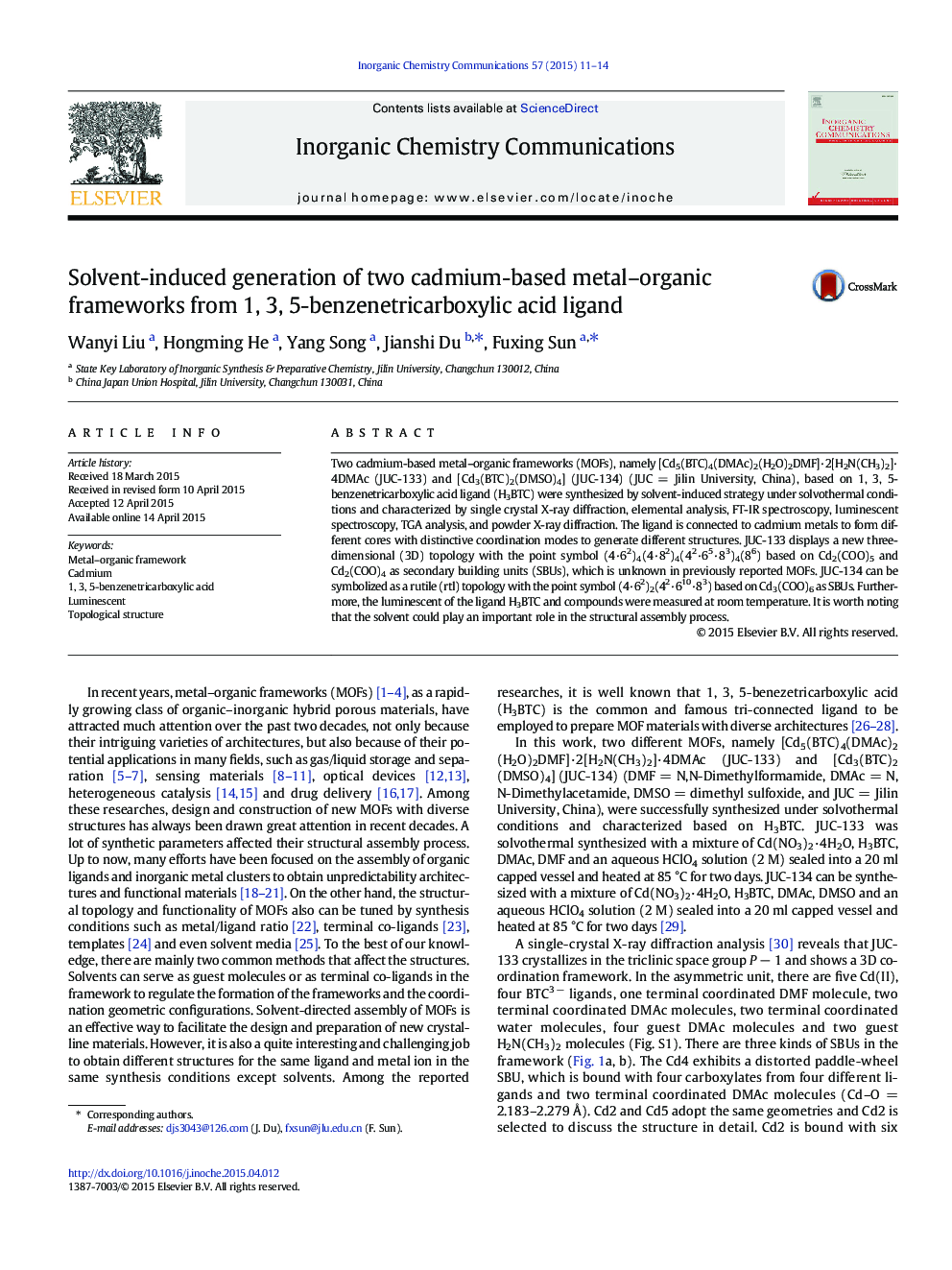| Article ID | Journal | Published Year | Pages | File Type |
|---|---|---|---|---|
| 1301463 | Inorganic Chemistry Communications | 2015 | 4 Pages |
•Two Cd MOFs have been prepared by solvent-induced strategy.•JUC-133 displays a new topology.•JUC-134 is a rutile (rtl) topology.
Two cadmium-based metal–organic frameworks (MOFs), namely [Cd5(BTC)4(DMAc)2(H2O)2DMF]·2[H2N(CH3)2]·4DMAc (JUC-133) and [Cd3(BTC)2(DMSO)4] (JUC-134) (JUC = Jilin University, China), based on 1, 3, 5-benzenetricarboxylic acid ligand (H3BTC) were synthesized by solvent-induced strategy under solvothermal conditions and characterized by single crystal X-ray diffraction, elemental analysis, FT-IR spectroscopy, luminescent spectroscopy, TGA analysis, and powder X-ray diffraction. The ligand is connected to cadmium metals to form different cores with distinctive coordination modes to generate different structures. JUC-133 displays a new three-dimensional (3D) topology with the point symbol (4·62)4(4·82)4(42·65·83)4(86) based on Cd2(COO)5 and Cd2(COO)4 as secondary building units (SBUs), which is unknown in previously reported MOFs. JUC-134 can be symbolized as a rutile (rtl) topology with the point symbol (4·62)2(42·610·83) based on Cd3(COO)6 as SBUs. Furthermore, the luminescent of the ligand H3BTC and compounds were measured at room temperature. It is worth noting that the solvent could play an important role in the structural assembly process.
Graphical abstractTwo cadmium-based metal–organic frameworks (MOFs), namely JUC-133 and JUC-134, based on 1, 3, 5-benzenetricarboxylic acid ligand (H3BTC) were synthesized by solvent-induced strategy under solvothermal conditions. JUC-133 displays a new 3D topology based on Cd2(COO)5 and Cd2(COO)4 as SBUs. In addition, JUC-134 can be symbolized as a rutile topology based on Cd3(COO)6 as SBUs.Figure optionsDownload full-size imageDownload as PowerPoint slide
